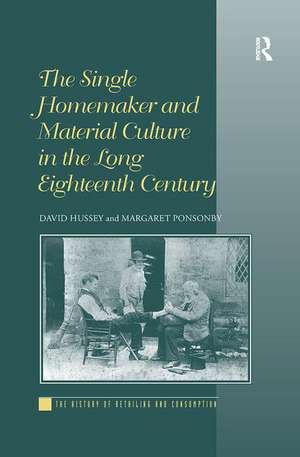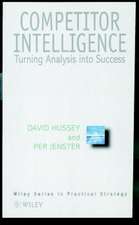The Single Homemaker and Material Culture in the Long Eighteenth Century
Autor David Hussey, Margaret Ponsonbyen Limba Engleză Paperback – 9 sep 2016
| Toate formatele și edițiile | Preț | Express |
|---|---|---|
| Paperback (1) | 469.34 lei 6-8 săpt. | |
| Taylor & Francis – 9 sep 2016 | 469.34 lei 6-8 săpt. | |
| Hardback (1) | 1113.91 lei 6-8 săpt. | |
| Taylor & Francis – 28 mai 2012 | 1113.91 lei 6-8 săpt. |
Preț: 469.34 lei
Nou
Puncte Express: 704
Preț estimativ în valută:
89.81€ • 94.02$ • 74.31£
89.81€ • 94.02$ • 74.31£
Carte tipărită la comandă
Livrare economică 05-19 aprilie
Preluare comenzi: 021 569.72.76
Specificații
ISBN-13: 9781138252752
ISBN-10: 1138252751
Pagini: 252
Dimensiuni: 156 x 234 x 13 mm
Greutate: 0.45 kg
Ediția:1
Editura: Taylor & Francis
Colecția Routledge
Locul publicării:Oxford, United Kingdom
ISBN-10: 1138252751
Pagini: 252
Dimensiuni: 156 x 234 x 13 mm
Greutate: 0.45 kg
Ediția:1
Editura: Taylor & Francis
Colecția Routledge
Locul publicării:Oxford, United Kingdom
Cuprins
Contents: Introduction; Being single; Singleness and homemaking: locating the single household; Organisation and management of a single household; Social and symbolic uses of the homes of single people; Compromised spaces: lodgers, boarders and shared domestic space; Conclusion; Bibliography; Index.
Notă biografică
David Hussey is subject leader in History at the University of Wolverhampton, UK, and Margaret Ponsonby is Senior Lecturer in History and Media and Cultural Studies at the University of Wolverhampton.
Recenzii
'Domestic space is very much at the centre: the authors see the home, as many social historians are increasingly doing, as 'a cockpit wherein the cultures of consumption were defined and exercised'. We benefit enormously from their decision to consider single men and women together, which makes the comparative role of the account constantly illuminating.' History
Descriere
The Single Homemaker and Material Culture in the Long Eighteenth Century represents a new synthesis of gender history and material culture studies. It seeks to analyse the lives and cultural expression of single men and women from 1650 to 1850 within the main focus of domestic activity, the home. Whilst there is much scholarly interest in singleness and a raft of literature on the construction and apprehension of the home, no other book has sought to bring these discrete studies together. Similarly, scholarly work has been limited in evaluating gendered consumption practices during the long eighteenth century because of an emphasis on the homes of families. Analysing the practices of single people emphasises the differences, but also amplifies the similarities, in their strategies of domestic life.





